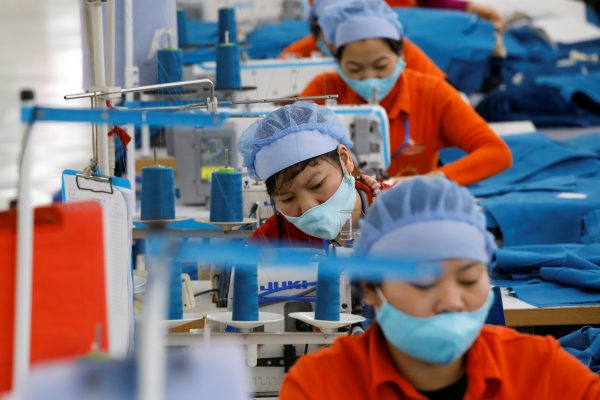Exports from January through to November 2022 grew more than imports — with growth of 13 per cent for exports and 10 per cent for imports — so there is a modest trade surplus. Tourism has rebounded from 2021’s low levels, supporting strong growth in the service sector.
Manufacturing and industry grew by nearly 9 per cent through to the end of November — a slower rate than earlier in the year. There was a slowdown in export orders and hundreds of thousands of factory workers may be facing layoffs according to unofficial reports. This is a serious concern, especially if the trend intensifies in 2023. Vietnamese firms provide limited unemployment compensation, especially for workers with only a few years of service.
Corporate bonds are also in trouble, especially those of real estate companies. There are billions of dollars of bonds denominated in Vietnamese dong that need to be refinanced in 2022 and 2023. Most of these were sold through private placement and then sold to local investors. With tight credit, caused in part by the use of Vietnam’s foreign exchange reserves to support its currency, it is difficult for companies to refinance.
Vietnam’s anti-corruption drive has begun looking into some land transfers by real estate companies, throwing doubt on their ability to receive full legal ownership or control of land needed for their projects. This makes it hard for banks to finance the projects or for foreigners to buy the assets. This could cause distress for many companies unless some resolution is reached. But these real estate problems are not nearly as large as those in China and should be manageable in Vietnam.
There are strengths to offset these challenges. Inflation is reported in the low single digits, though many complain that inflation is really higher. The currency has depreciated by only about 5 per cent against the US dollar as of early December 2022, less than in many other countries.
Fiscal policy has been restrained. With a few exceptions, most Vietnamese banks are in a strong position with adequate capital. High inflows and realisation of foreign investment suggest that as the global economy recovers there will be a continuing flow of workers from low-productivity agriculture to higher-productivity manufacturing. This will increase demand for real estate in cities, despite lower population growth.
Foreign direct investment into the manufacturing sector will also support growth and add to the structural transformation of the economy. Plans to cease or curtail the construction of new coal-fired powerplants will avoid stranded assets and pollution.
Meanwhile, participation in trade agreements is giving Vietnam access to world markets — though the Vietnamese government is hoping that China–US trade tensions do not prevent them from taking full advantage of their position as a supply base acceptable to the United States while relying on imports of intermediate inputs from China.
In 2023, it is anticipated that the drivers of the economy will no longer be exports or even consumer spending, which has seen 15 per cent growth during 2022. Instead, a further rebound in tourism as China unwinds its COVID-19 protocols along with sharp increases in government investment are intended to catapult Vietnam’s economy towards a target of 6.5 per cent GDP growth.
This is an ambitious target and one that may be difficult to reach if the world economy, or at least Vietnam’s major export markets of the United States, European Union and China, are softening.
Foreign direct investment may remain strong if companies continue to move out of China, reflecting concerns about the perceived instability of Chinese policy due to COVID-19 lockdowns and continuing concern with China’s tensions with other major economies.
Indeed, Vietnam may find that later this decade it is running out of rural labour that wants to leave for the factories. Farm workers numbered 24.5 million in 2014 and only 14.2 million in 2021, representing a decline of nearly 1.5 million each year according to data from the Asian Development Bank.
If that rate continued for another five years, those left in agriculture would be about as productive as those in manufacturing and many of them would be older workers not interested in factory work. The ‘motor’ of fast growth for the last decade would sputter and labour force growth would slow down. At that point, GDP growth would decrease to 5 per cent or less unless productivity across the economy grew more quickly.
This is the medium-term challenge for Vietnam — to switch its sources of growth to those based on productivity rather than labour reallocation through migration. But in 2023, assuming there are no major natural disasters, it should be possible for Vietnam to keep its economy’s momentum up as long as the global environment improves over the year.
David Dapice is a Senior Economist in the Ash Center for Democratic Governance and Innovation at the John F Kennedy School of Government, Harvard University.
This article is part of an EAF special feature series on 2022 in review and the year ahead.

